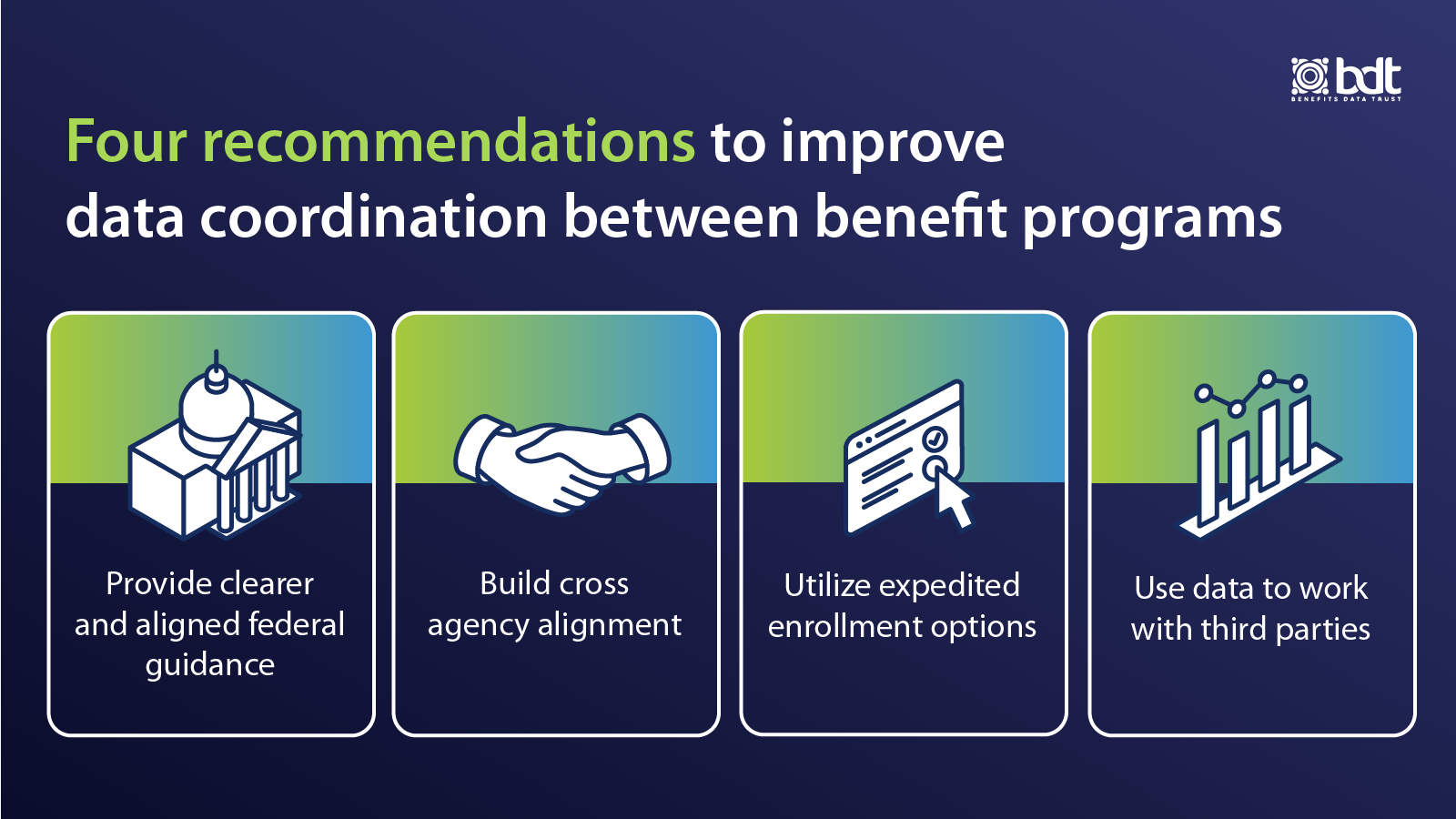Leaders and staff of state agencies who administer benefit programs face a challenging year ahead as the country works to unwind many policies connected to the COVID-19 pandemic. They are charged with managing the expiration of continuous coverage protections for Medicaid recipients, helping those enrolled in the Supplemental Nutrition Assistance Program (SNAP) understand why their monthly benefit amounts are suddenly much lower, and ending the temporary SNAP waivers that helped more people afford food as inflation skyrocketed. At the same time, they are focused on finding ways to reduce the administrative burden related to these programs.
We know our partners at these agencies want to serve people well, yet change is always hard and the path ahead can seem murky and overwhelming at times.
Benefits Data Trust (BDT), alongside the Center for Health Care Strategies, and with funding from the Robert Wood Johnson Foundation, reached out to all 50 states’ SNAP and Medicaid agencies to learn more about improving data coordination across two of the largest federal entitlement programs. We sought to learn how states across the country use data to drive efficiency, where best practices are being implemented, how agencies are experimenting with new data sharing processes, and which states are looking for support.

In the responses received from 46 states, we heard resounding similarities. Implementing the recommendations has the potential to make the enrollment and recertification processes easier for eligible individuals and more efficient for both applicants and program administrators by improving data coordination between benefit programs. The goal is for people to have less difficulty accessing resources that can significantly improve their health, well-being, and financial situation.
Four recurring themes appeared from agency after agency:
- Provide clearer and aligned federal guidance.
- Build cross-agency alignment.
- Utilize expedited enrollment options.
- Use data to work with third parties.
We outline each of these in a new report, built on the specific feedback we received from the Medicaid and SNAP agency leaders doing this work every day.
I invite you to check out more learnings and resources—including the findings from our survey of SNAP and Medicaid agencies—here.
